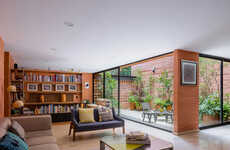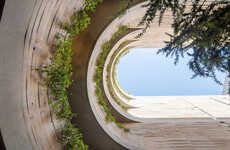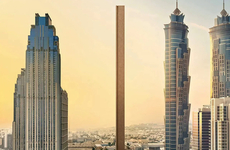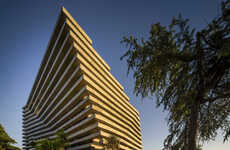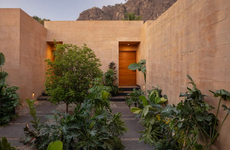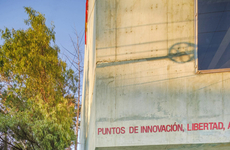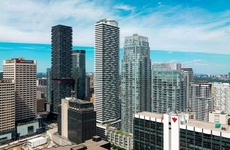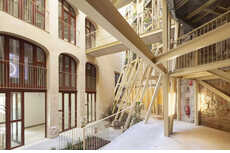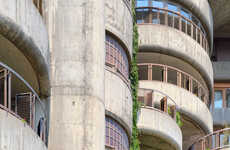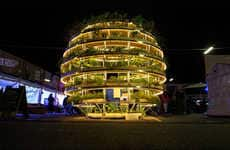
'Torre Reforma's' Facade Looks Like a Blade Slicing into the Sky
Cutting through the downtown core of Mexico City is Torre Reforma, an office building designed by architecture firm LBR + A. The newly opened triangular building has one glass side, but the facades on the second and third faces are covered in gray concrete, giving the building a sharp, razor-like appearance when the light is right.
Aside from its striking appearance, Torre Reforma was built with social and environmental concerns in mind. The approved building site covers space where a historical building stands, but rather than tearing it down, the architects incorporated the old building into the new one, making the historical house part of Torre Reforma's lobby and preserving its legacy. Environmentally, the building's facades allow for fewer structural columns, ultimately reducing energy consumption when compared to all-glass buildings, according to the architects.
Aside from its striking appearance, Torre Reforma was built with social and environmental concerns in mind. The approved building site covers space where a historical building stands, but rather than tearing it down, the architects incorporated the old building into the new one, making the historical house part of Torre Reforma's lobby and preserving its legacy. Environmentally, the building's facades allow for fewer structural columns, ultimately reducing energy consumption when compared to all-glass buildings, according to the architects.
Trend Themes
1. Sustainable Building Design - Incorporating historical structures into modern building designs can create unique and visually striking facades while preserving cultural heritage and reducing environmental impact.
2. Energy-efficient Architecture - Building facades that minimize the need for structural columns can lead to reduced energy consumption in comparison to traditional all-glass buildings.
3. Integration of Old and New - The integration of historical buildings into new architectural designs presents innovative opportunities for creating functional and visually appealing spaces that respect and showcase heritage.
Industry Implications
1. Architecture - Architects can explore the use of sustainable practices and the integration of historical structures to create visually striking and energy-efficient designs.
2. Construction - Construction companies can leverage innovative building techniques that incorporate historical buildings, enhancing their projects' appeal and sustainability.
3. Real Estate - Real estate developers can consider incorporating historical structures into their projects, providing unique selling points and preserving cultural heritage.
2.4
Score
Popularity
Activity
Freshness

